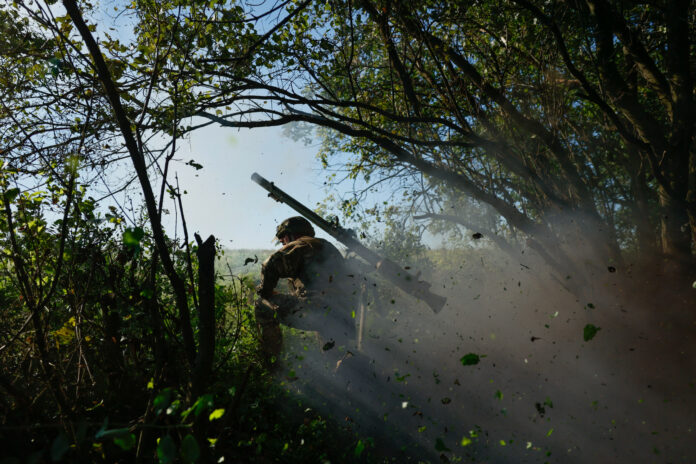The Russian and Ukrainian armies are engaged in a cat-and-mouse game along the 800-mile front as each side tries to force the other into deploying valuable reserves and therefore opening new gaps in the crystallizing contact line.
“In the annals of world military history, this has happened quite often when you have stalemates along an extended border,” Mark Voyger told Newsweek. He is a former special adviser for Russian and Eurasian affairs to then-commander of U.S. Army Europe General Ben Hodges.
As Ukraine seeks an elusive breakthrough in southern Zaporizhzhia and southeastern Donetsk oblasts, Russian forces are on the offensive in northeastern Luhansk and Kharkiv. Moscow’s troops are hoping to draw attention and resources away from Kyiv’s long-awaited counteroffensive effort in the south, and potentially even push through Ukrainian lines and recapture the city of Kupyansk.
There, Ukraine has been forced to deploy valuable reserves, despite its ongoing efforts to achieve a breakthrough in the south. Serhiy Cherevaty, a spokesperson for the Eastern Group of the Armed Forces of Ukraine, said on Tuesday that additional forces had been deployed to the Kupyansk area.
“Immediate clear orders were given to build a defense in depth,” Cherevaty said during a telethon as quoted by Ukrainian online newspaper Strana.ua. “Our firing positions were toughened, certain methodological recommendations were provided, reserves were transferred. Therefore, this made it impossible for the enemy to move.”
Roman Chop/Global Images Ukraine via Getty Images
Russian commanders are facing a similar dilemma. Moscow is reported to have redeployed some of its most experienced and well-equipped units to the Zaporizhzhia and Donetsk regions in recent months, intending them to blunt the expected Ukrainian counteroffensive.
Kyiv’s approach has been to launch multiple probing efforts augmented by constant erosion of Russian artillery and supply resources behind the lines. Exactly where the hammer would fall was unclear. It now appears that Ukraine has committed significant assault units and reserves to local breakthroughs around the Zaporizhzhia settlement of Robotyne and the Donetsk village of Urozhaine.
This has forced Russian commanders to spread their troops along the line. Continued Ukrainian amphibious raids across the Dnieper River—called the Dnipro in Ukrainian—also mean Russian troops must hold position on the eastern banks of the river, even though the area was badly flooded and considered impassable after the destruction of the Nova Kakhovka dam in June.
Anecdotal front-line dispatches speak of strained resources. Russian troops responding to a recent Ukrainian operation across the Dnieper noted how even the small raid opened up a significant gap in their defenses on the east bank.
And one Moscow-aligned unit forced out of Urozhaine this week spoke of promised reinforcements that never arrived. Newsweek has contacted the Russian Defense Ministry by email to request comment.
New diversionary and probing efforts are to be expected as Moscow and Kyiv both look to break a relatively static front line, which threatens to harden further as winter approaches.
“If they cannot advance against their main target or main area of the initial objective, they will probe elsewhere,” Voyger, who is a non-resident senior fellow at Center for European Analysis and professor at American University of Kyiv, said.
This is true of both sides, Voyger added. “That’s quite logical that was to be expected short of a decisive breakthrough, which I think it was overly optimistic on the part of the West expect such a breakthrough,” he said of Ukrainian efforts to advance.
“It will make sense for the Russian command to try to distract the Ukrainians in a different direction, so they can alleviate this pressure on their forces in the south,” Voyger added.
Distracting or pinning one’s enemy has great battlefield value, Pavel Luzin told Newsweek. He is a Russian political analyst and visiting scholar at The Fletcher School of Law and Diplomacy at Tufts University in Medford, Massachusetts. “The main benefit is that the enemy is losing flexibility and mobility, losing the room for maneuvering,” he said.
Russian doctrine, Luzin added, “dictates not to find yourself in such a situation, and not to lose the strategic initiative. That’s why the commanders are trying to restore the initiative by tactical offensive actions and by using aviation, missiles and loitering munitions like Shahed drones.”


